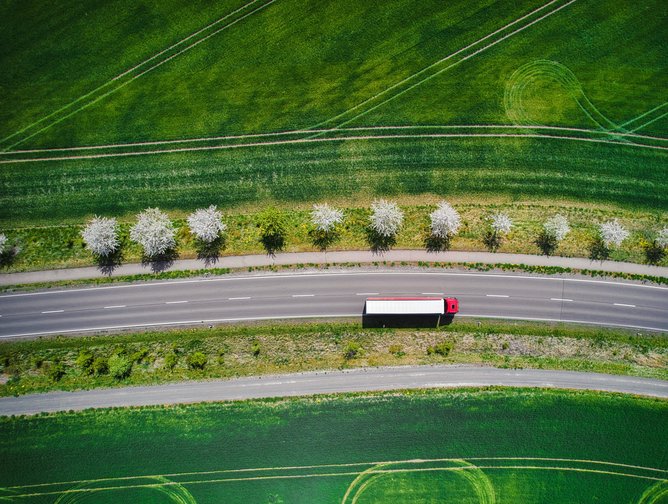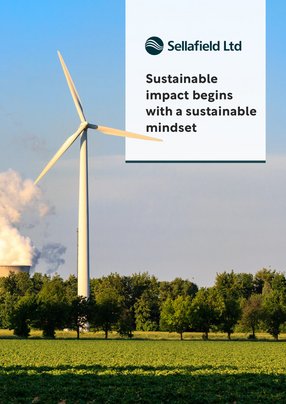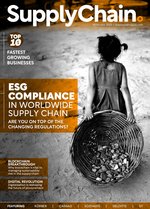Sellafield: Impact requires a sustainability-driven mindset
There is a misconception that one person can tackle all of the global challenges in an instant. This is especially true with areas of sustainability.
The imminent threat of centuries of damage to the planet makes sustainability a very passionate subject, but it is not without its challenges. This is why one of the most critical tasks for some of the most impactful organisations is managing expectations of what their businesses can achieve in the eyes of those that work for them—but also those that look from the outside-in.
It is in this sense we can say that the majority still don’t grasp the concept of sustainability whereby one change can cause a chain reaction in a particular direction, albeit related to business or climate, that can alter how the world works. In combining the attributes of the economy and sustainability, we open up a very complex environment, of which all businesses will learn to navigate over the coming years—or so we hope.
Some of the most critical industries, namely supply chain and energy, are undergoing great shifts to first de-risk, then decarbonise, with a number of social implications along the way. Facilitating this monumental transition requires passionate people with the ability to listen, learn, and act upon the challenges that come their way—true advocates of, not just sustainability, but ensuring environmental prosperity, social justice, and effective governance.
Someone with passion and at the same time realism, for sustainability within her sector and beyond, is Eirini Etoimou, Head of Corporate Sustainability & Supply Chain Development and Sourcing at Sellafield Ltd. Etoimou seeks to tackle the challenge at its very core in an industry that is under a watchful eye due to the nature of its nationally important work.
As one of the key centres for nuclear engineering management, Sellafield Ltd is tackling the legacy of the past and building a capability for the future. Having spent over two years with the organisation, heading up supply chain development, strategic SRM, and sustainability practices, Etoimou is well aware that it is not realistic to make the company more sustainable in a heartbeat, but instead takes a more pragmatic approach to the task—starting with its people.
Winning the hearts and minds of the workforce
One of the key points that Etoimou makes is about action. Ambiguity around sustainability and the different definitions make people feeling intimidated or reluctant to contribute or even to find out more.
Now we’ve all heard the cliche phrase ‘we just need to take action’, but Etoimou’s approach to building sustainability into Sellafield Ltd is to transform sustainability from being opaque and complex, to easy, accessible and meaningful for all Sellafield’s people and its partners.
There is a realistic approach here, as Etoimou shares: “not everyone is ‘ready’ to listen or to be part of the sustainability journey; but this should not stop us. We can always focus on the ones that want and are ready. We can identify these areas that can deliver quick wins in order to attract some positive attention and gain more advocates, but we should not fall into the trap of ‘short-termism’. There are quick wins, but sustainability is equal to the bigger picture and long-term. It is important to pass this message to everyone in the business that would expect immediate results.
“Considering the nature of our business, and taking a holistic approach, we identified four key focal areas, the interconnectivity of which will allow us to move from ambition to action and to long-lasting results. These areas are aligned supply chains, positive environmental impact, innovative solutions, and motivated people,” says Etoimou.
It is not just about working with advocates but ensuring that their missions align with those of the business because, as Etoimou points out, there are some individuals with a passion in sustainability that can work against the effort to strategically move in the right direction.
“For me pushing back sustainability is equally a problem with the obsessive passion,” says Etoimou. She continues: “In the sustainability journey, we need to work together. Everyone may have an idea or a thought, but quick, opportunistic raids, won’t help anyone. Sustainability requires structure and focus. Everyone should be clear of the plan, their role; have an idea, have a thought, but share, be aligned, build up on this structure.
This is the reason why I keep avoiding the phrase ‘sustainability strategy’. Instead, I say “I build the strategy for the sustainability integration”. Sustainability is a mindset, and from my perspective, you don’t strategise the mind; work with it, influence it, inspire it”.
“Many years ago, when I realised what sustainability was about, I remember I had a T-Shirt-slogan, ‘I love Sustainability’, approach; back then I thought sustainability was self-explicit, no further details needed. Obviously, that was a mistake. That was when I realised that I had to personalise my message to every individual or team I spoke to about the subject. So, it was and still is my responsibility to find ways to approach and to bring people along.
“I am not saying it is easy. It requires a lot of time and effort to engage with every single person, but there are ways,” says Etoimou. “Obviously sustainability is not down to one person, therefore some specific actions can achieve some quick wins. Impact requires more advocates, and you can attract people with a different voice or way of communicating to work with others that you may not be able to.
“This could be somebody’s friend or close colleague with a completely different way of approaching that one person or group of people. However, we need to accept that some, no matter what, simply don’t want to engage. So, let’s focus and work with the ones that are more receptive.”
You could say that Etoimou refers to a pyramid effect here, whereby working with the right mindset towards sustainability creates a pool of individuals that can carry the message to others—creating a ripple effect throughout the organisation. In doing so, not only does this reduce time to impact others but also the extent of which Etoimou must address individual cases of non-advocacy or even ‘over-advocacy’.
“I am a big believer of the impact the environment has on you as an individual, and we are affected by other people’s behaviours—so we can be influenced,” Etoimou says.
“Even if one person is not, I doubt that person would remain 100% against sustainability. This is where we discuss equal rights, we talk about our children, our parents, and the environment, there is nothing that this person won’t relate to. It is not black and white, and we start with those that understand it and can support what we are doing.”
There is one major factor among the first steps to bringing teams on board. Making sustainability’s impact more measurable and having an equal share in the business plan or corporate KPIs.
“Thinking of a CFO as an example, we need to acknowledge that they are right in some respects. The language is different: they discuss Return on Investment (ROI), Earnings Before Interest, Taxes, Depreciation, Amortisation (EBITDA), and we discuss waste management, carbon reduction, and social value. The ambiguity on metrics and the numerous and inconsistent approaches to measuring sustainability impact does not help either.
“There is also a ‘short-termism’ effect, which means trying to prove that a sustainability activity will have an immediate result, and this is where any evidence remains incomplete, and we lack this evidence of sustainability’s value.”
Embedding Sellafield’s principles into the supply chain
There’s a common theme here, which is all about taking action on things that are achievable. In an ideal world, Sellafield Ltd would align its entire workforce to sustainability as a way of living and operating as opposed to a strategy. This was stressed by Etoimou as a staple part of society and how it functions as more than just a means of achieving the climate net-zero emissions goal.
When looking at the supply chain the approach is very much similar, whereby feasible actions can be taken to ensure that new companies tendering for contracts with Sellafield align with its sustainability goals. The controllable aspect of this is the criteria, which is how the organisation ensures that suppliers meet the necessary requirements to do business going forward.
“We are taking an end-to-end approach with our supply chain. From the awareness level and throughout the supplier journey, sustainability will be there. Considering the nature of our business, which predominantly relies on our supply chain for our purpose of delivery, it only makes sense to work collaboratively with our partners to support, directly and indirectly our sustainability goals,” says Etoimou.
“We want to ensure that we will achieve our goals, but most importantly, that we will contribute so more of our existing and potential partners can appreciate the importance of embedding sustainability principles in their organisations. It is fundamental to have more role models around us; only in this way we can achieve a greater, positive impact.
“Evidently, there is a direct correlation between meaningful business relationships and exponential impact from sustainability actions. In our case, our social value programme, our Six strategy, combined with our environmental strategy, and the carbon management programme, can only multiply and maximise their impact through collaboration with our supply chain. This provides both parties with the right visibility and understanding of each other’s priorities and maturity level, allowing sharing of knowledge and expertise to advance progress.”
Etoimou then explains the need to align its principles and actions with those of its partners.
“First of all, it is important and only fair for everyone that would like to work with us to be aware of our expectations and principles in advance. Our ‘supplier journey’, an interactive guidance tool that describes every step of a supplier’s life cycle within Sellafield, includes among other useful information guidance, sustainability and collaborative working principles. We created a new market engagement strategy, introducing the ‘principles alignment’ and as part of the tender process, new, meaningful, sustainability questions,” says Etoimou.
“We are seeking commitment, not perfection, and we ensure that we cover cases of existing contracts as part of our SRM model”, she explains, “this is as well one of the reasons we decided and recently launched an upskilling programme, initially focused on our SMEs, and we are working with our major partners on a joined socio-economic programme, ensuring alignment and targeted actions with credible results for our communities.
“Having said that, I still believe that despite all of these being in place, and all the interactions with the supply chain and our colleagues, in principle, all of this is necessary, but still reactive. In the procurement world, sustainability should start from the design phase, but even this is the second step for me. The first step where everything starts with sustainability, is the mindset. Only a person, a team, an organisation with a mature sustainability mindset will design or describe a need embedding these principles; then, all the system will need to serve this need as described, without ‘negotiations’ in the process.”
This re-emphasises the need for a sustainability mindset at the beginning of any design process (no matter if it is the design of a product, service or business model) having and aligning to ESG goals in mind—from here we begin to paint a picture of how the different stages look with mindset being the vital first step that educates further processes.
“The person or teams to decide that we need this product, service, building, for example, must have the sustainability mindset in order to begin writing the specification in that way”, Etoimou says, and she continues: “the list is long, but incredibly rewarding: emissions, energy, materials, lifecycle value, impact on the communities, supply chain transparency, among others. It becomes exciting when we look at the numbers. Those who will seriously and strategically integrate sustainability in their businesses, in their projects, they will experience positive financial performance and long-lasting savings.
“I appreciate that numbers matter, but at the same time, for a successful sustainable transformation, we need to invest in the human capital, as this will support and contribute to our social value, competitive advantage, and reputation.
“We are currently working on a number of environmental and socio-economic areas, such as compliance, data, energy & water, carbon management, travel, transport, natural capital, good health & wellbeing, built environment, engineering and climate adaptation among others. But, in parallel, our priority is investment in sustainability integration. For this reason, we built a new engagement plan to make our people feel that everyone has a role, and everything counts. Within this structured approach, focusing on the same goal, everyone will have the opportunity to initiate, influence, and inspire their social or professional circle.”
It is acknowledged as well that sustainability at this stage does not mean the same for every single person. “It is part of our engagement plan to achieve this minimum level of common understanding, the understanding of the ‘so what’, ‘why’ we need to care, and ‘how’ we can care meaningfully,” she explains.
Etoimou aims this strategy for integrating sustainability into Sellafield Ltd that will likely trigger deliverables through collaboration. Centring sustainability in the heart of every business decision and culture, organisations can look at sustainability as a characteristic of their business rather than an industry or status or buzzword, meaningful actions can be taken to change the way they approach the subject and begin to consider the bigger picture and the long-lasting results.






